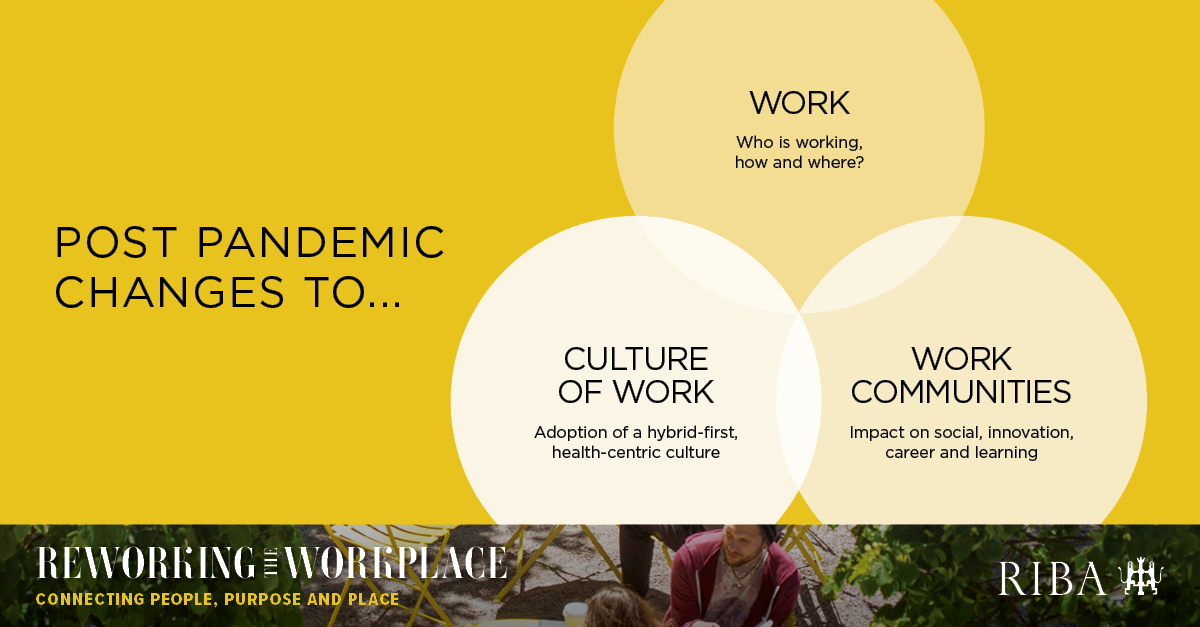
Despite a tumultuous last three years, the working landscape continues to shift in response to global events. Still trying to work our way through what a post-pandemic workforce could look like, this challenge has been further compounded by rising energy, commodity pricing and soaring inflation. The associated cost of living crisis has real implications, both for workers and also for how the work model emerges and a critical point in its reformulation.
The missed opportunity of DEI&B?
So how does this continue to reshape our relationship with work, organisational culture and community? During the midst of the recession, we dreamt of how the pandemic could reshape where we work, who was working, and how work was enabled.
A major cultural movement to gain momentum in the past few years is Diversity, Equity, Inclusion and Belonging (DEI&B); the latter making its way into our vernacular within recent months as a reflection of the expectations we have from our work and work-communities. Expanding the availability of hybrid or remote roles provided those who have previously been excluded from the physical workforce (or even education) the same access to opportunities. In 2020 this appeared to offer a significant opportunity for employment equality for those with disabilities who were unable to access the physical office environment. However, recent data from both the US and the UK highlight that rates of people with disabilities in the workforce fell during the pandemic and is yet to recover to pre-pandemic levels.
People living with disabilities are often disproportionately affected during recessions, facing additional barriers to finding and maintaining employment and may be more likely to experience poverty and social exclusion. With that in mind, the promise of expanding where work can be done to increase the proportion of the demographic who are able to work, appears to have not yet materialized.
As many organisations spend time developing ESG and DEI&B policies on how to create a culture of inclusivity, diversity and social value, we must ask ourselves whether we have optimised the opportunity that the pandemic offered us to create a more equal work community through hybrid and remote work.
AI and elimination of explicit knowledge
Three years on from the first mass-adoption of hybrid working, we stand on the precipice of the next major technology shift; Artificial Intelligence (AI). Over the last 12 months, there has been an explosion of online, free-access tools that have reshaped the way we write articles, design websites, even the way we take school tests. This technology has the opportunity to revolutionize the way in which we design workspaces and cities, by synthesizing large-scale data sets, such as user needs, energy pricing, consumer spending, office utilisation, commute patterns and employee health factors. Through AI's superior ability to take explicit information and consolidate at rates not possible by humans, we are on the brink of the first generation of mass-automation.
However, with these opportunities comes another major shift in the way we work. Jobs that are based on the transfer of explicit knowledge, such as those that rely heavily on routine and rule-based tasks could be automated. If there is a manual or a process to follow, AI is likely to be able to follow it. And now, even non-linear processes based on unstructured data are in scope for change.
So, what does this mean for the future of work and organisational communities? Recent research by Cushman and Wakefield, based on insights from Dr. Karen Stephenson's 'Theory of Trust', found that teams that work together (in an office) generally have more tacit, social capital. They invest in new relationships with a wider and more diverse range of contacts that develop better outcomes in learning, career development, innovation and ultimately, a greater sense of employee belonging and engagement. And there are organisational benefits too, studies from Gallup find that organisational with higher levels of social capital are 21% more productive and 22% more profitable.
In contrast when we work fully at home, we tend to focus on human capital; the job at hand, working in hierarchies and following the rules and processes set out by the organisations. The implication is that in much of the same way that over the last few years we needed to transfer tacit knowledge to explicit, to ensure the success of hybrid work, we must now prepare to hand over these explicit tasks to AI. If I can find ways to innovate and learn asynchronously using existing data; so, can AI.
So what is the implication for the future of work?
The limit for AI is the inability to work with tacit information that doesn't yet exist, placing the value of human thinking more so on lateral, problem-solving and emotional intelligence. Therefore it is likely that we will see the role of humans at work start to shift towards these capabilities. This is likely to precipitate a shift in the skills and types of workers employed within industry sectors, and a need for new actors to come together and share knowledge to develop ideas.
The implication on workplace?
Our research shows that activities such as creativity and problem solving may be more effective, enjoyable and deliver higher-quality outcomes, when people work physically together. Networks are more diverse, we reach out to people from outside our day-to-day engagements to learn, receive or give mentorship, making the value of togetherness more important than ever. It just so happens that organisations facilitate this togetherness in physical place, but as per post pandemic-rhetoric, the value of this space is to facilitate relationships and not just deliver head-down work.
What's next?...
Despite the many changes over the last few years, the role and value to individuals of being together has endured if not grown. However, the changing culture of work, placing hybrid work and health at its centre provides opportunity to create more inclusive work communities. In addition, digitalization continues to facilitate the transfer of tacit workplace relationships and networks into explicit products and services, such that the communities we build can be more geographically dispersed. However, re-working the workplace offers a unique canvas from which to facilitate human connection as we start to solve these challenges. After all, what is the workplace if not to facilitate the experience of being humans, together.
This blog summarises elements of content from ‘Reworking the Workplace’, in anticipation of its general release by RIBA Publishing on 1 June 2023. The book explores the future of work, workplace and the city in the face of global disruptors. It provides data, concepts and frameworks, historic analysis and 50+ cutting edge case studies, across three thematic areas of People, Purpose and Place. Further weekly sneak previews in this format will follow leading up to general release!
Follow: #reworkingtheworkplace on Twitter and LinkedIn
Preorder: ‘To pre-order your copy of Reworking the Workplace click the link here: At the RIBA Bookstore External Link, and On Amazon External Link
To get in touch with the authors, Nicola Gillen, Sophie Schuller plus other co-authors as appropriate.













